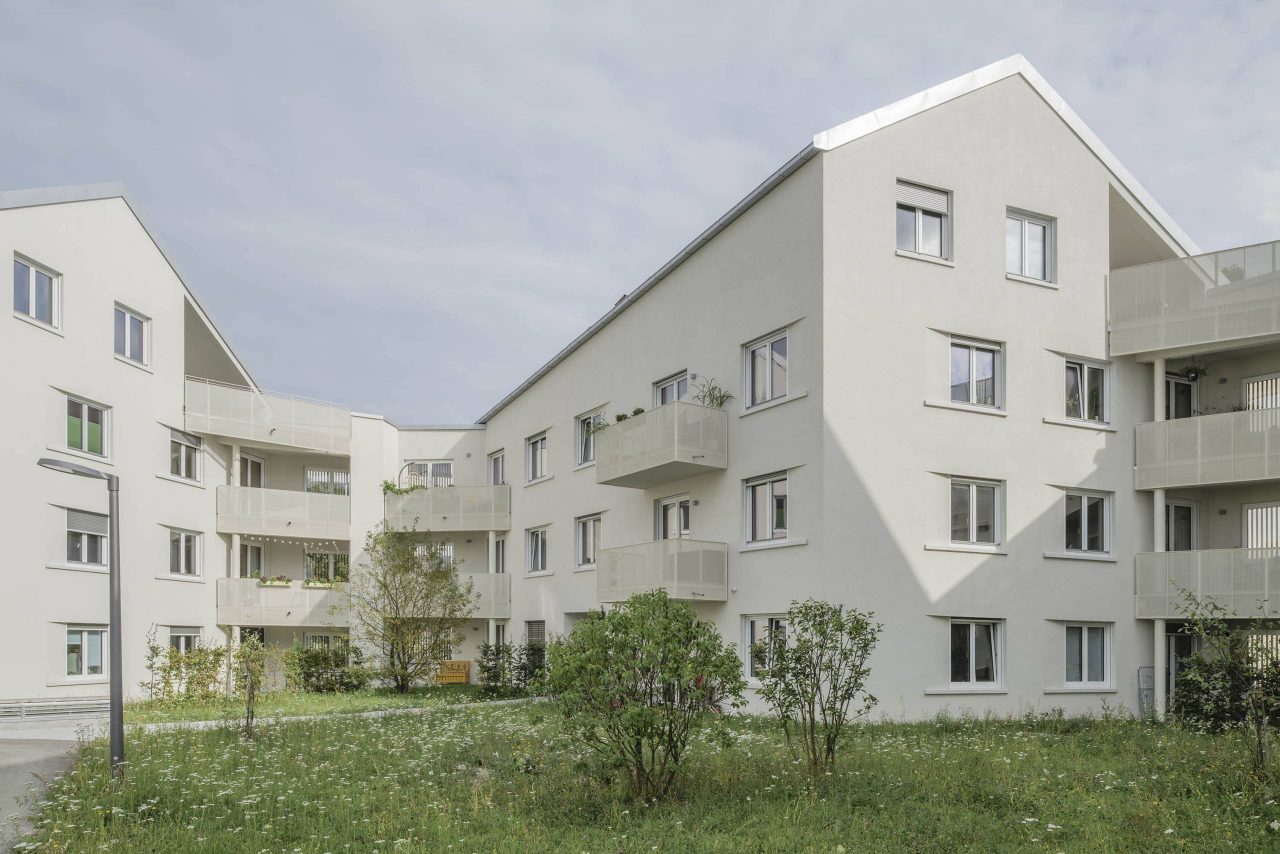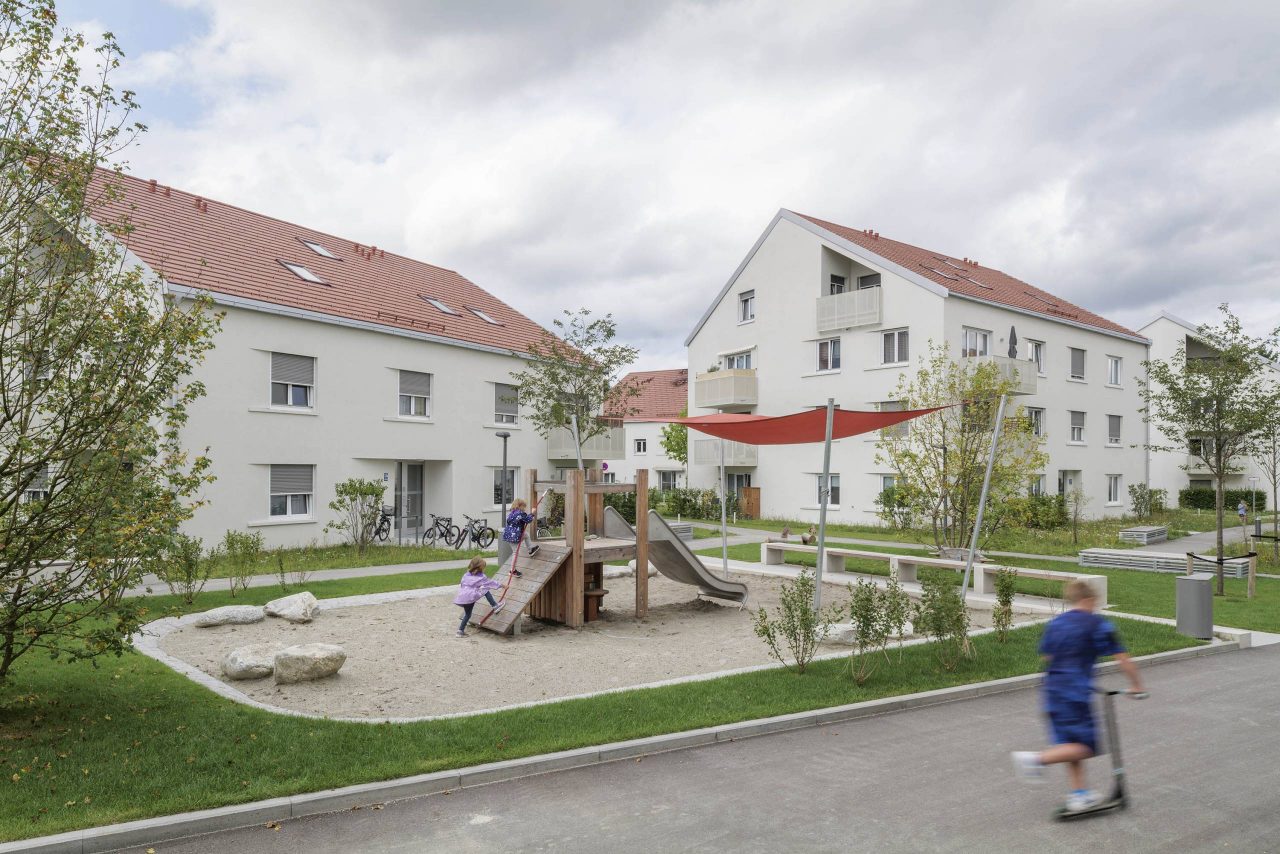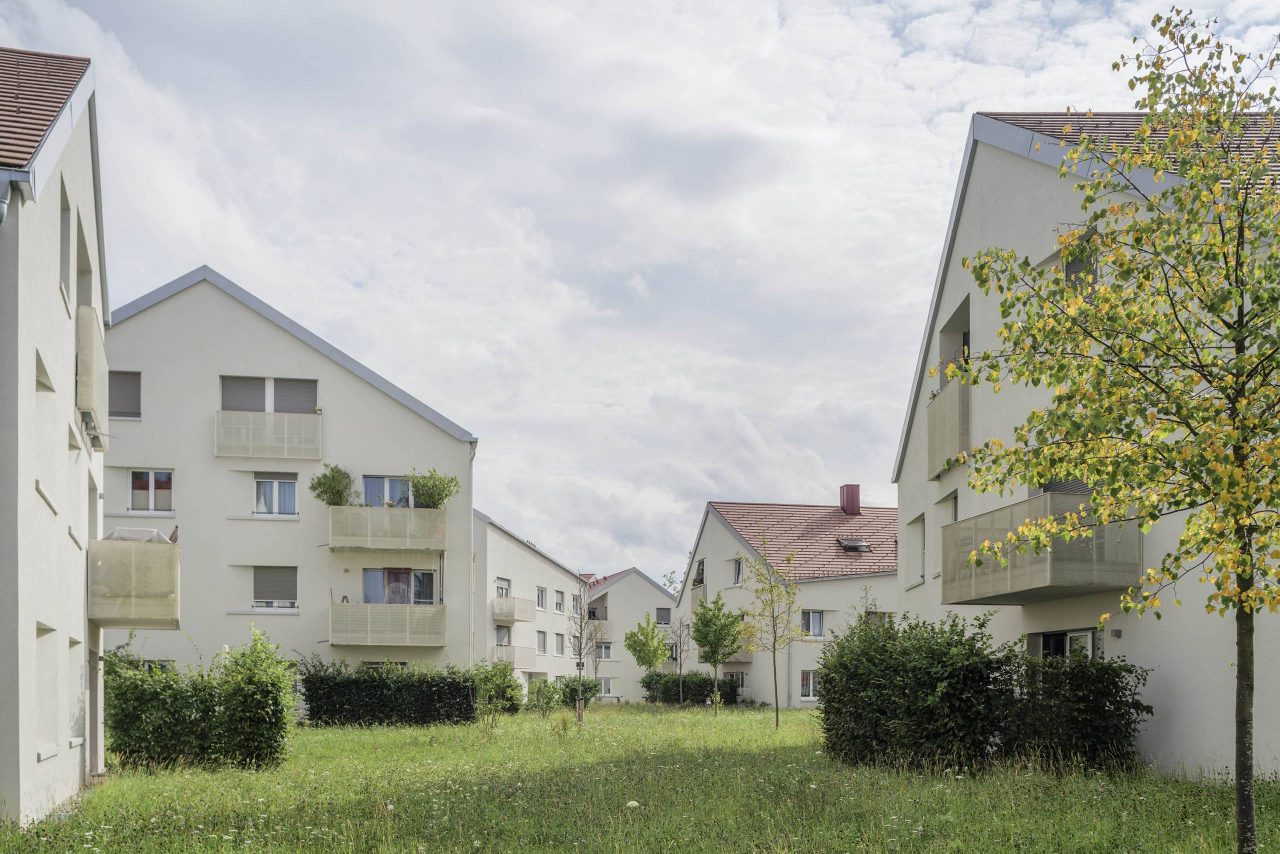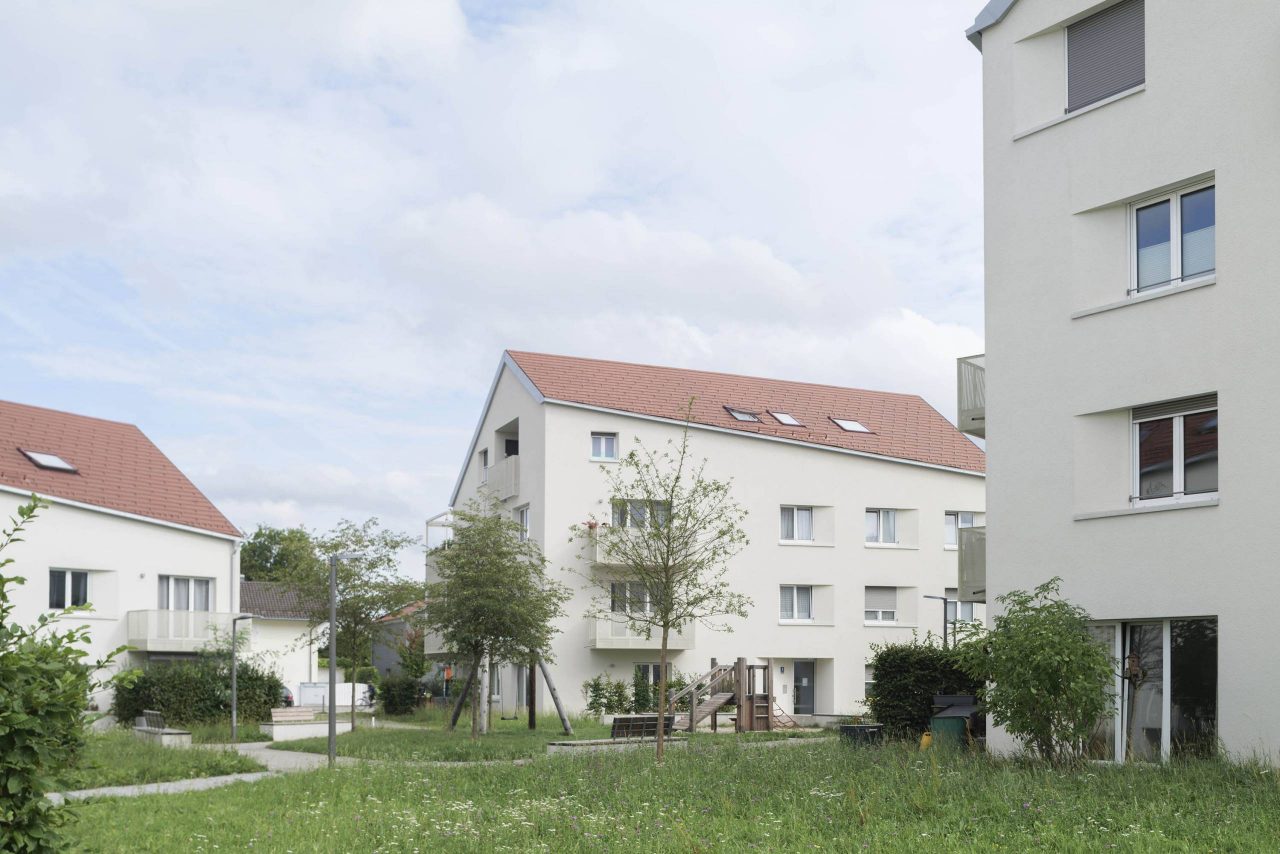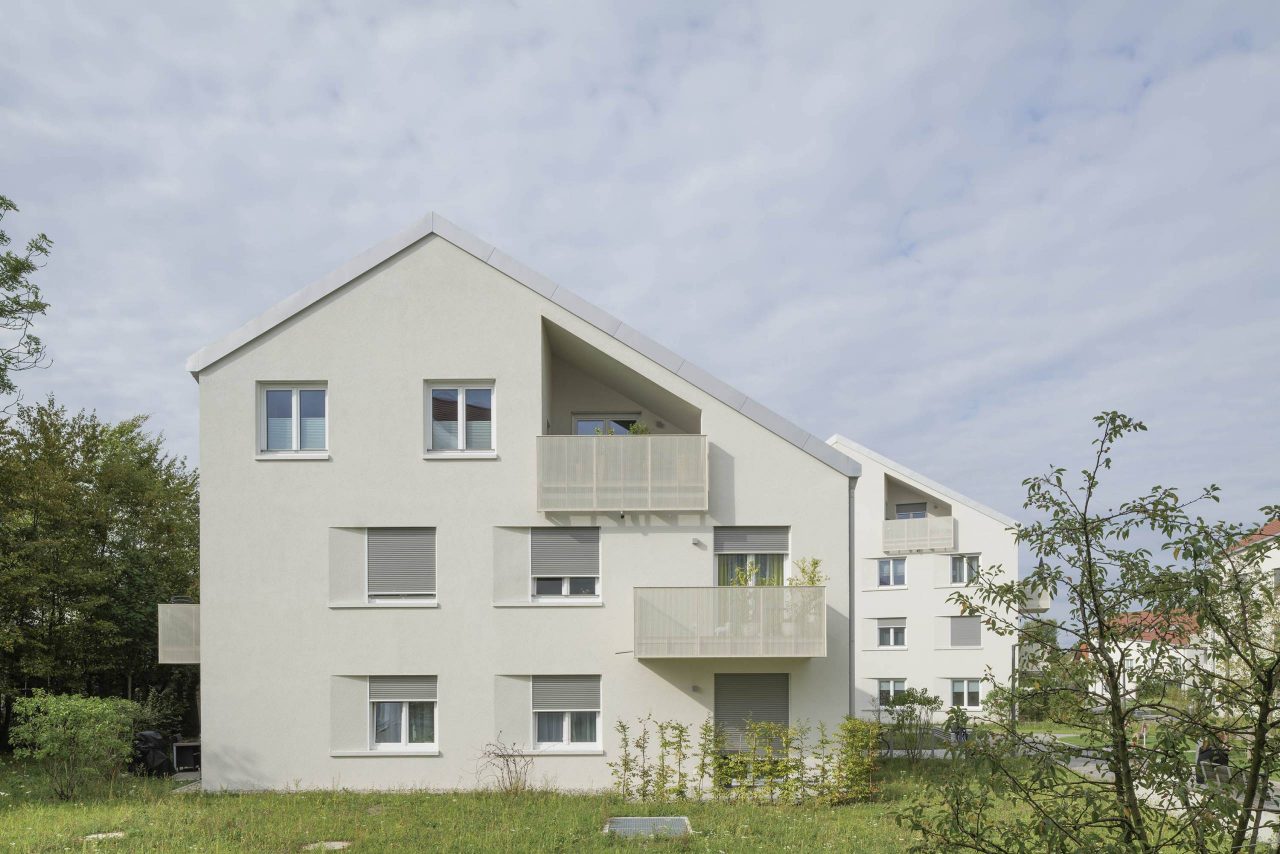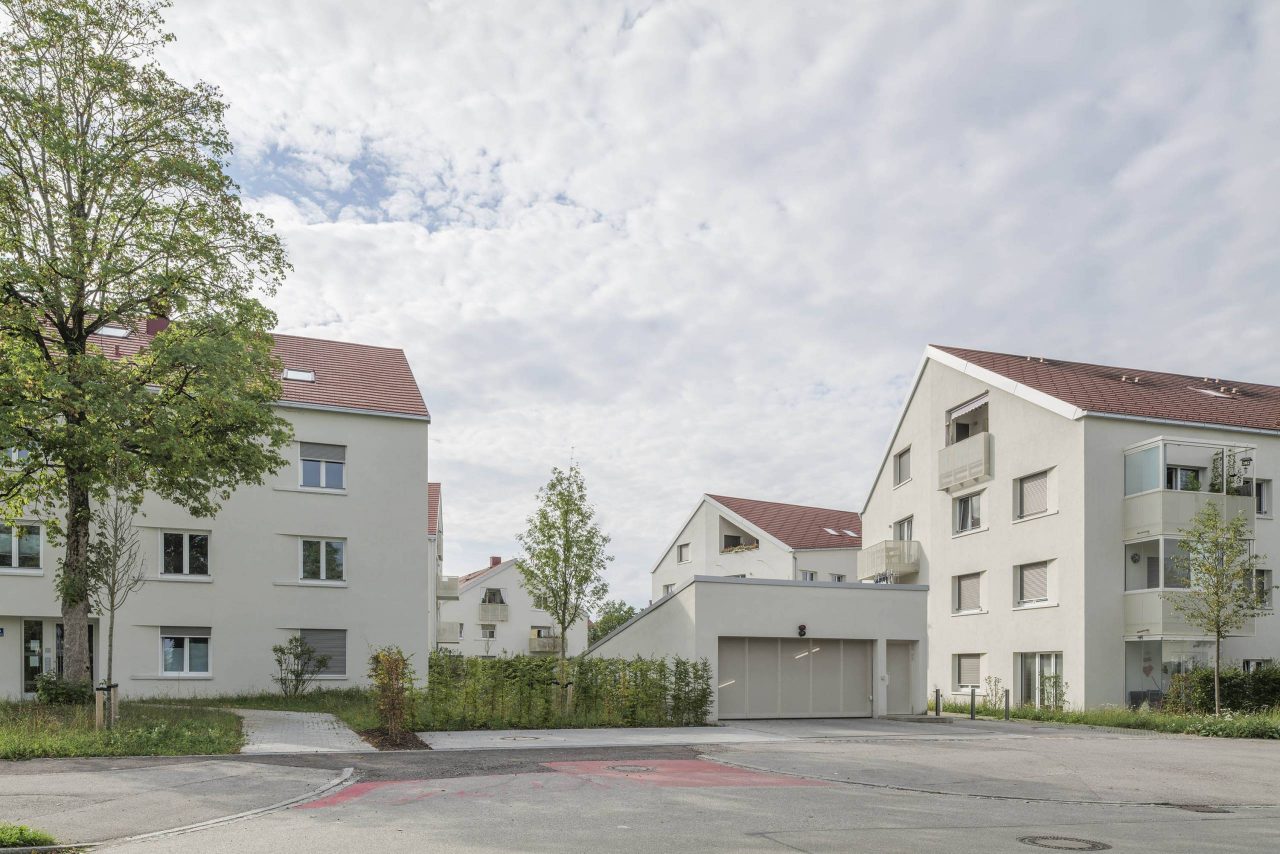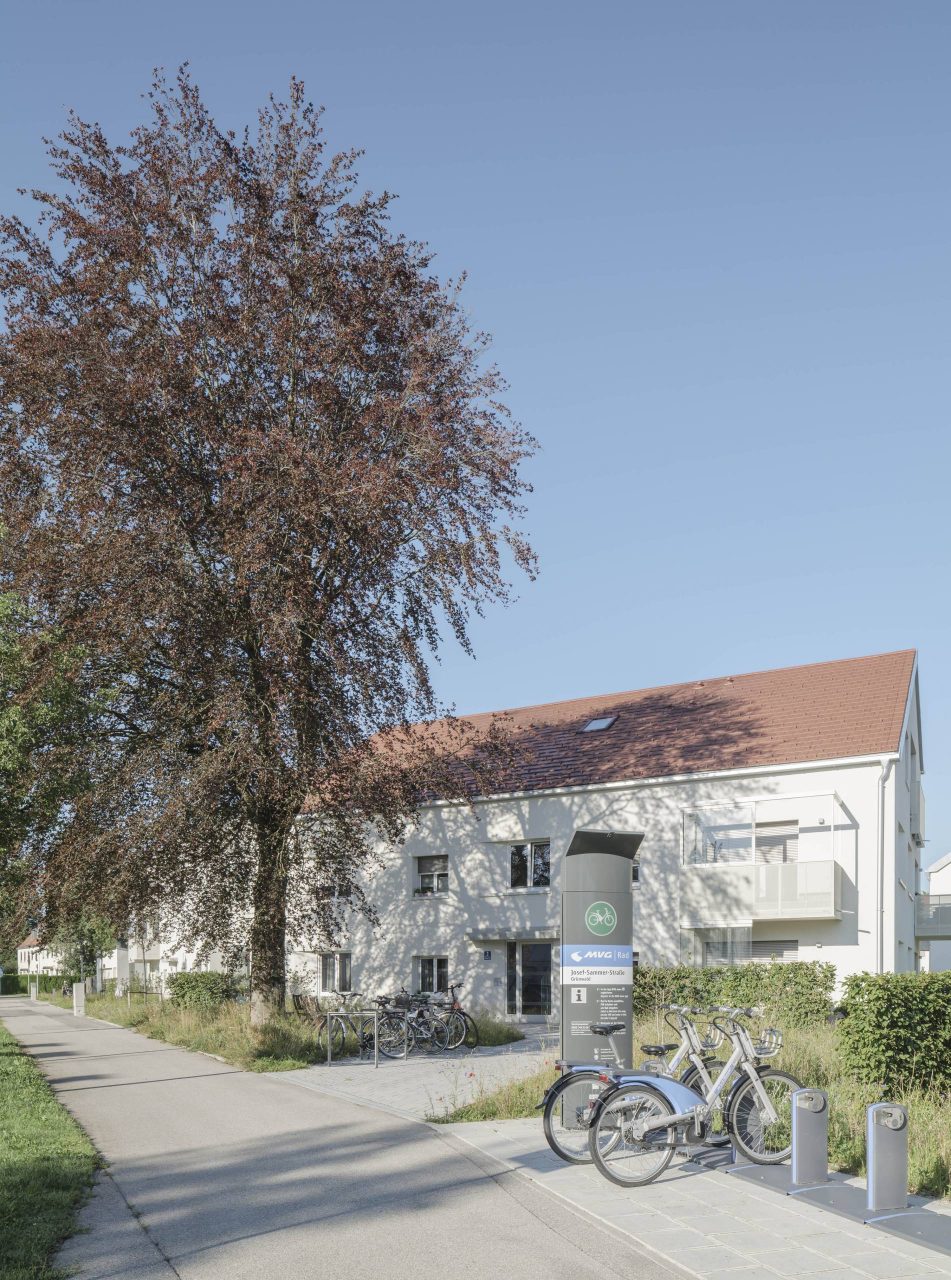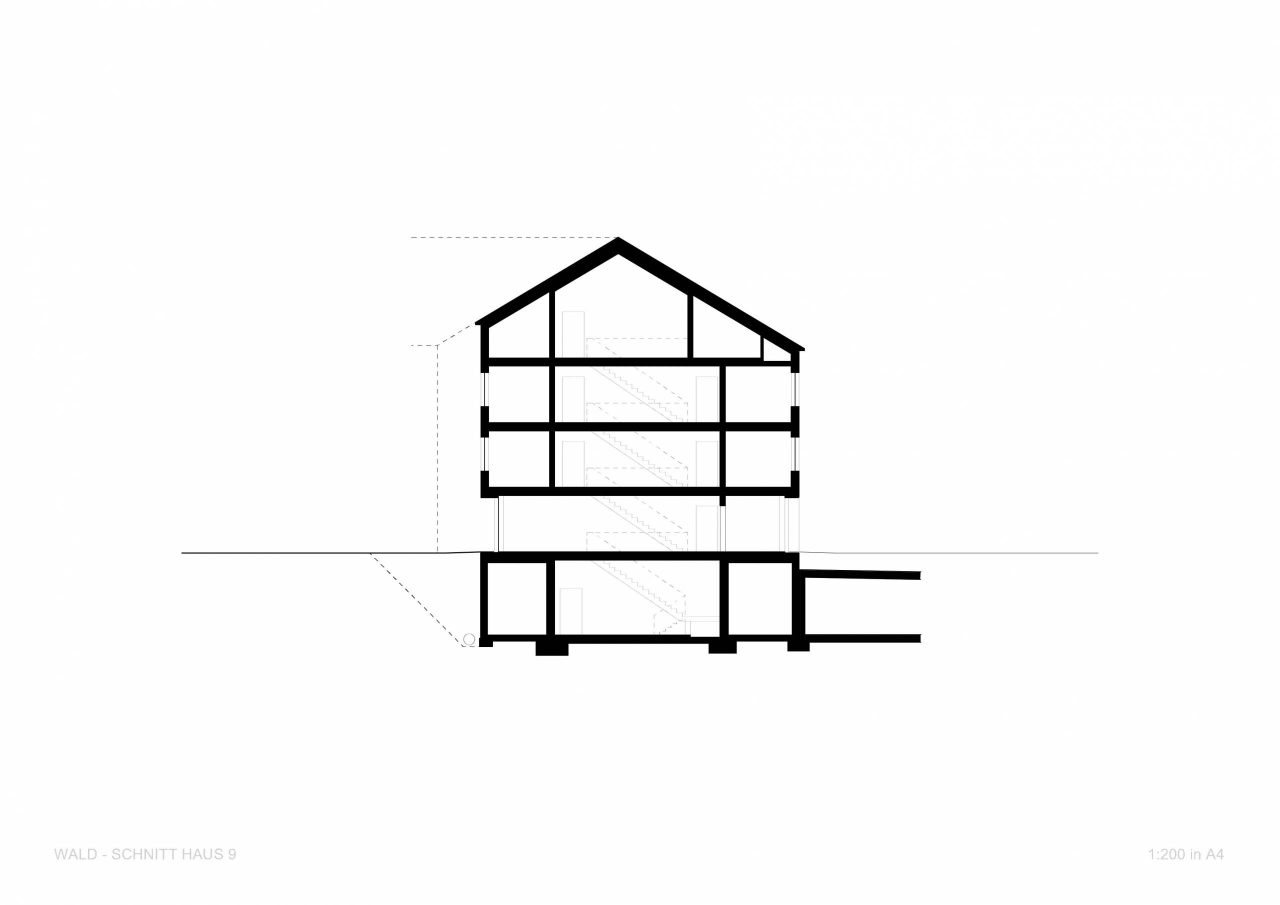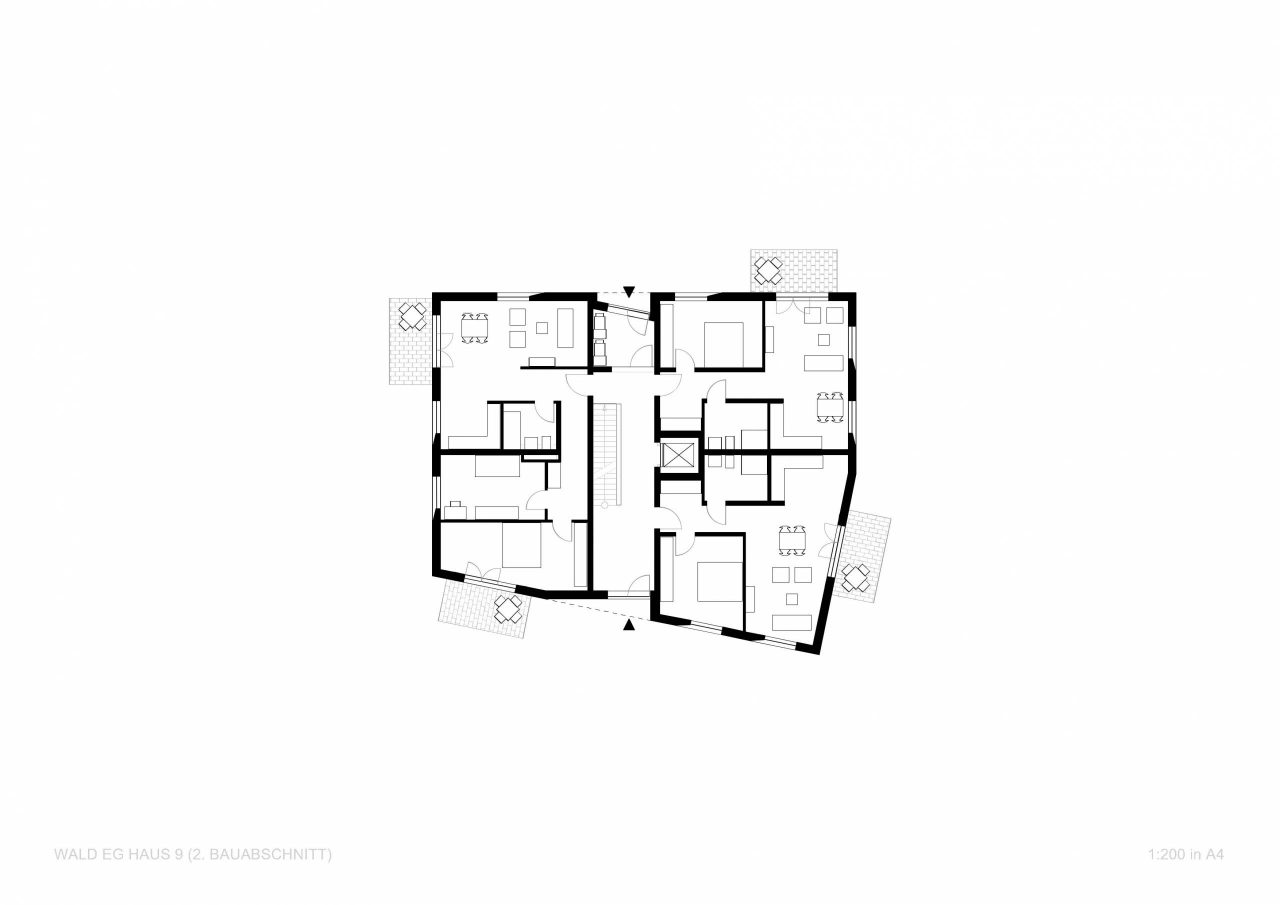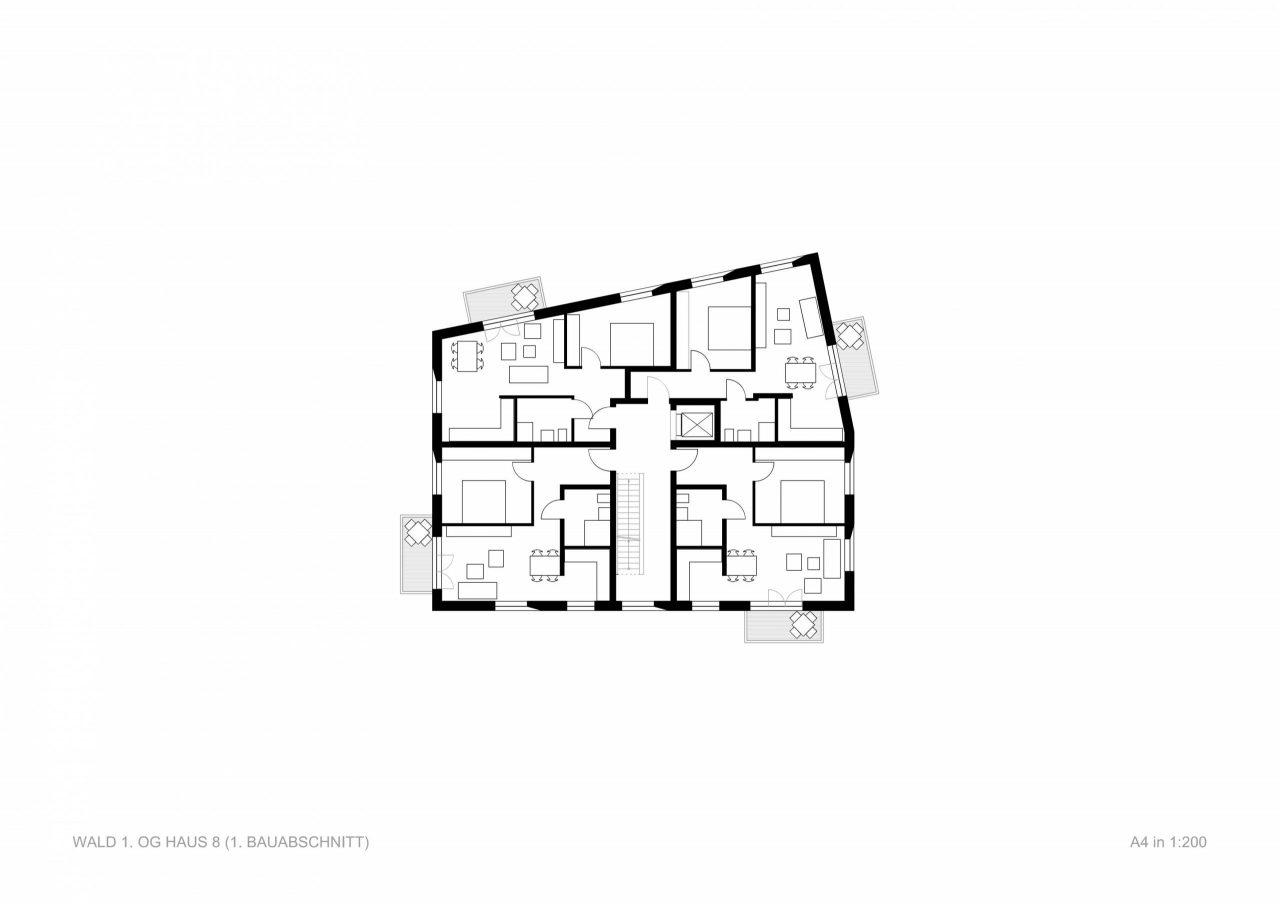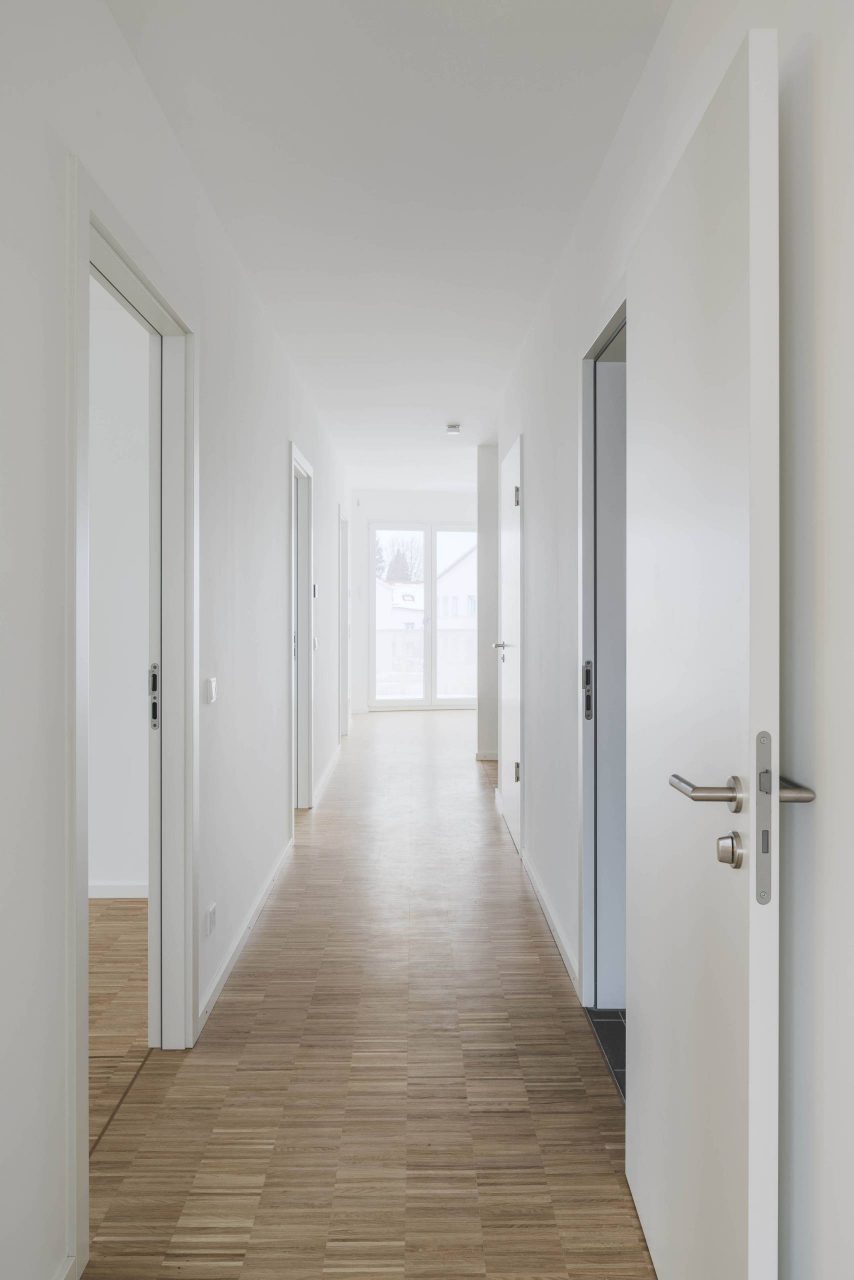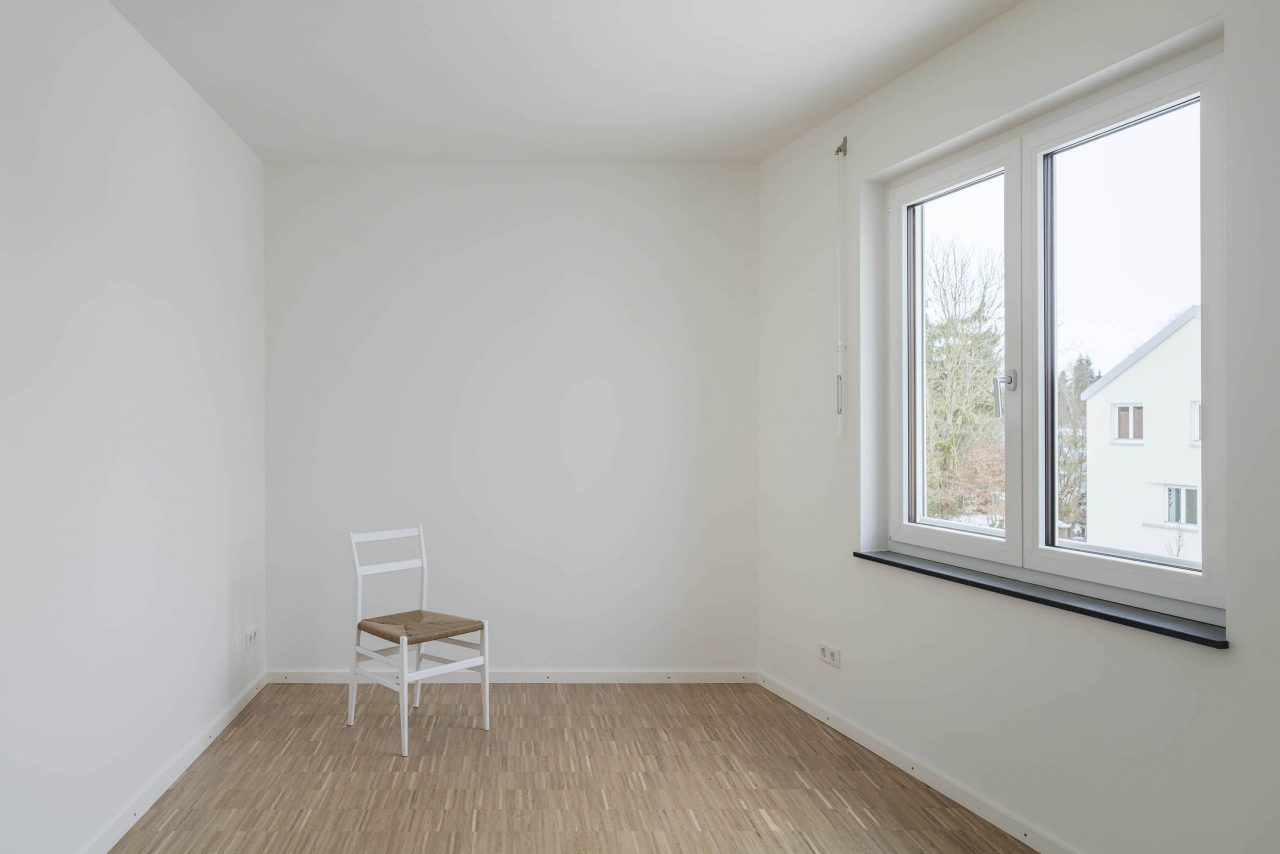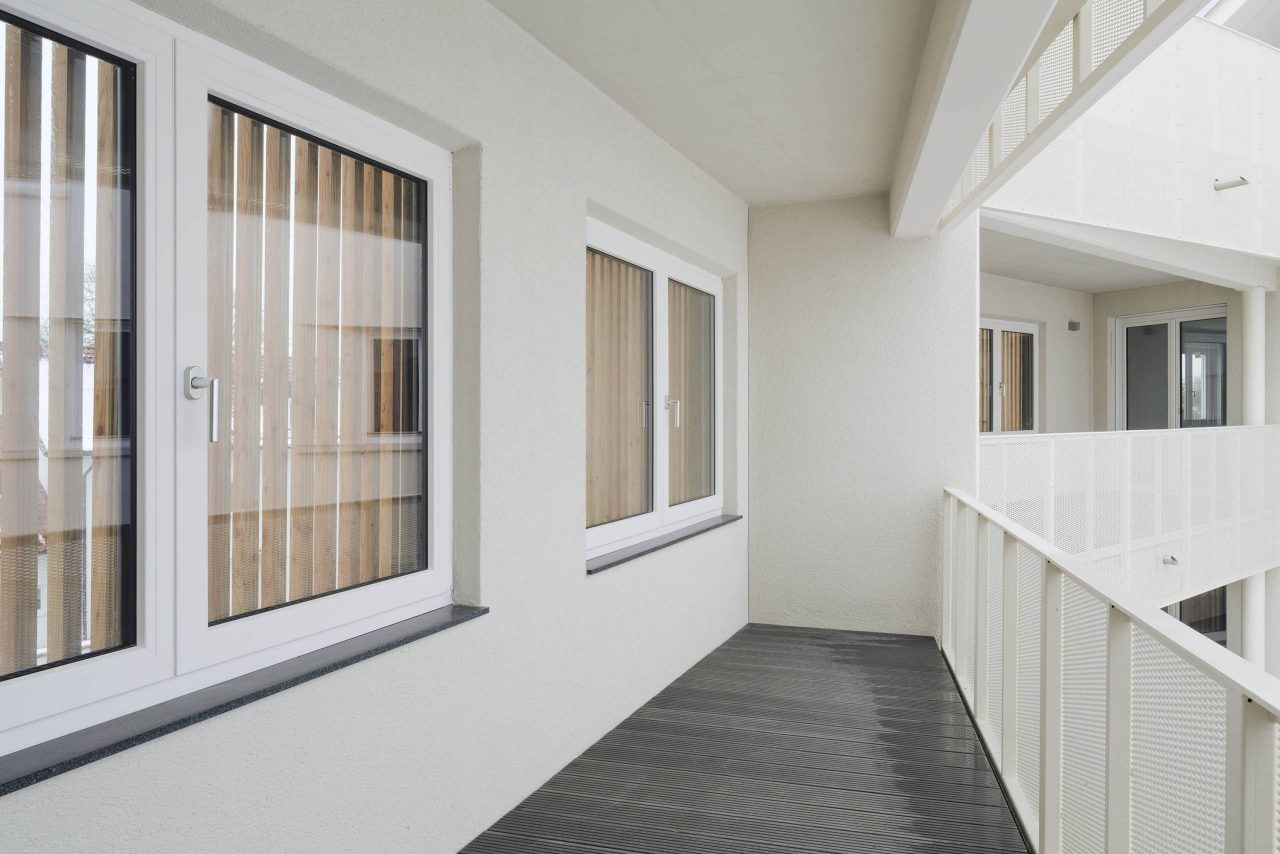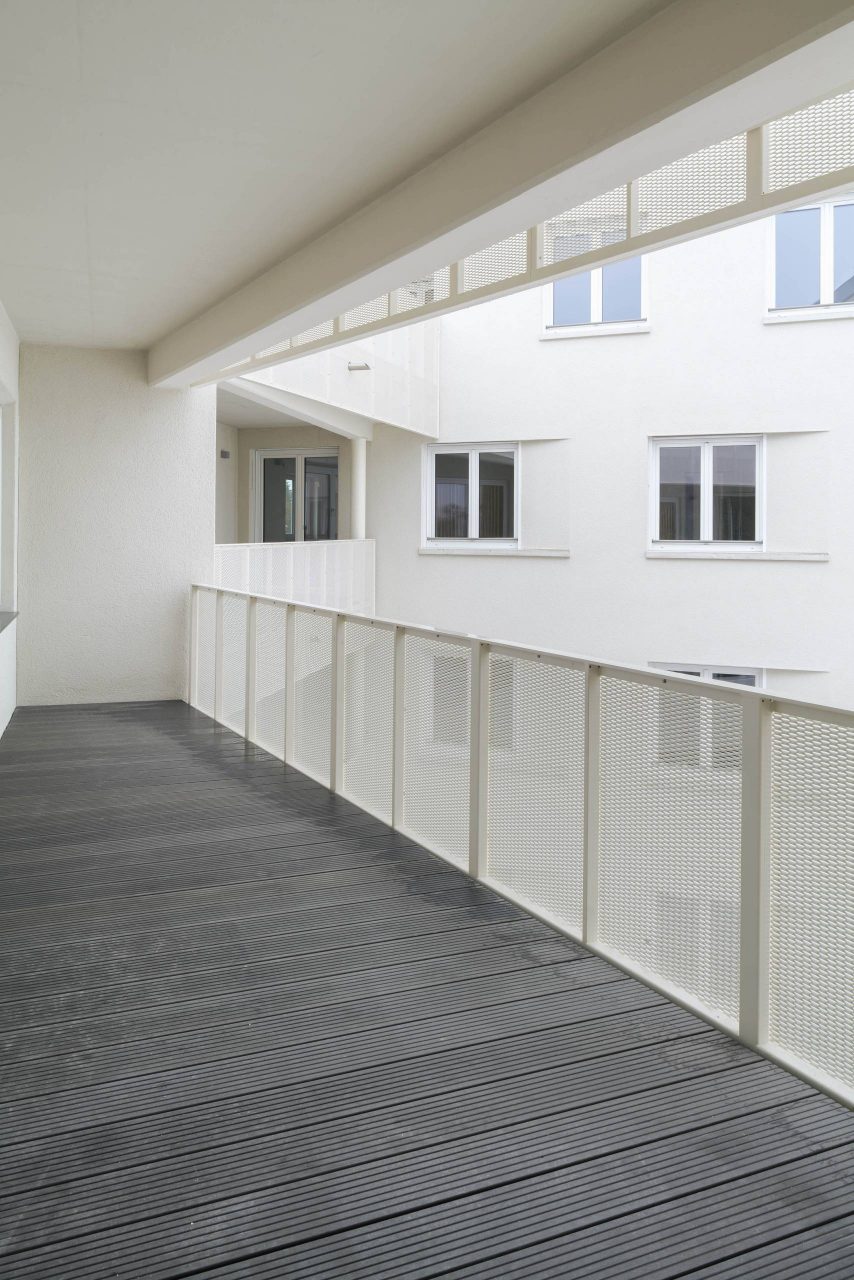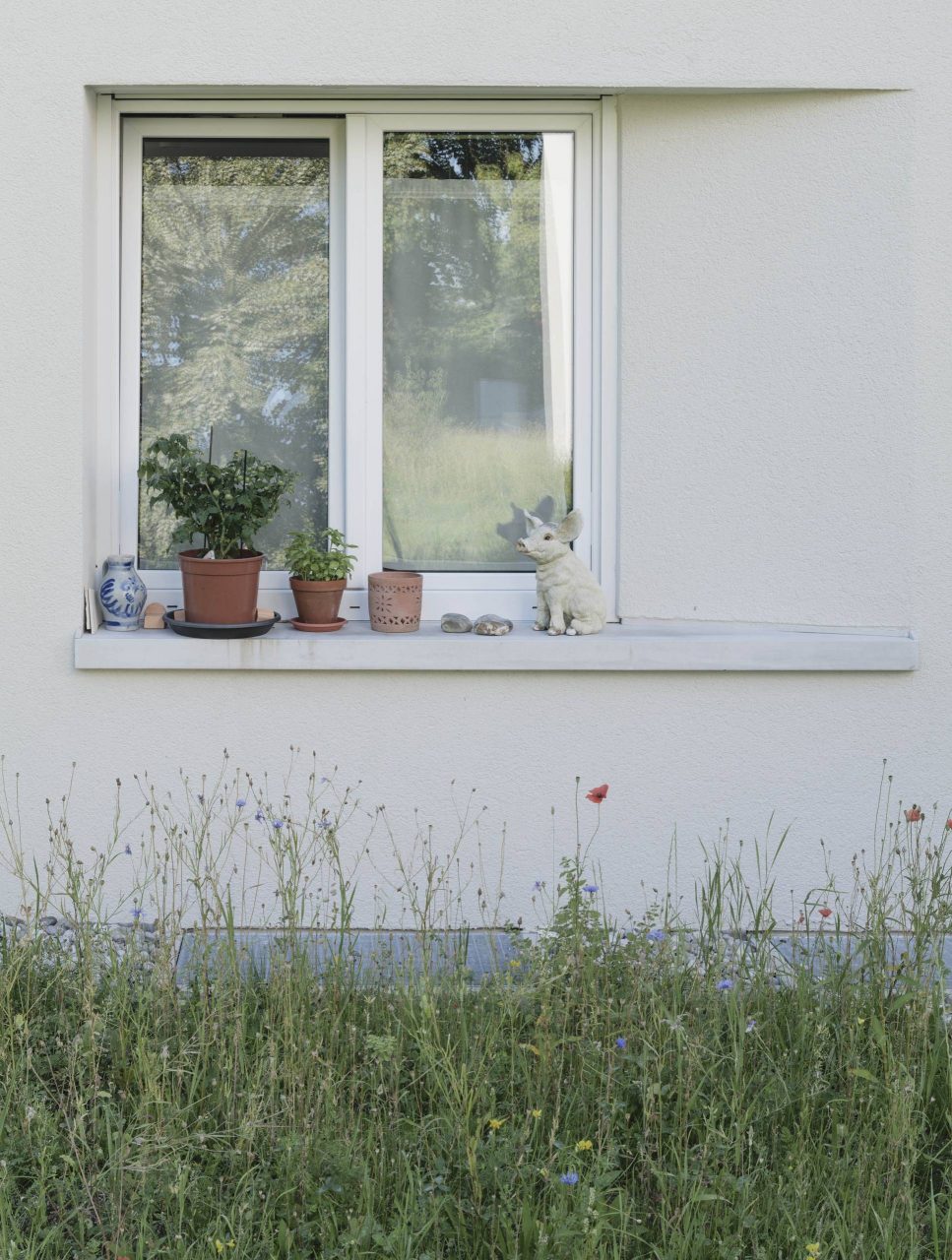
„So selbstverständlich wie möglich. So innovativ wie nötig.“
Durch die Einbeziehung einer Straße entsteht ein großes, parkähnliches Grundstück, auf dem die 14 Wohnhäuser in einer offenen Struktur angeordnet sind. Kompakte Volumen gruppieren sich um drei gemeinschaftliche Plätze und bilden überschaubare, vernetzte Einheiten. Die Qualität des genossenschaftlichen Wohngedankens zeigt sich in den durchdachten Grundrissen. Großzügige durchgesteckte Erschließungszonen im Erdgeschoss dienen als Verteiler innerhalb des Hauses und bilden als informeller Kommunikationsraum einen Übergang zwischen Wohn- und Freiraum.
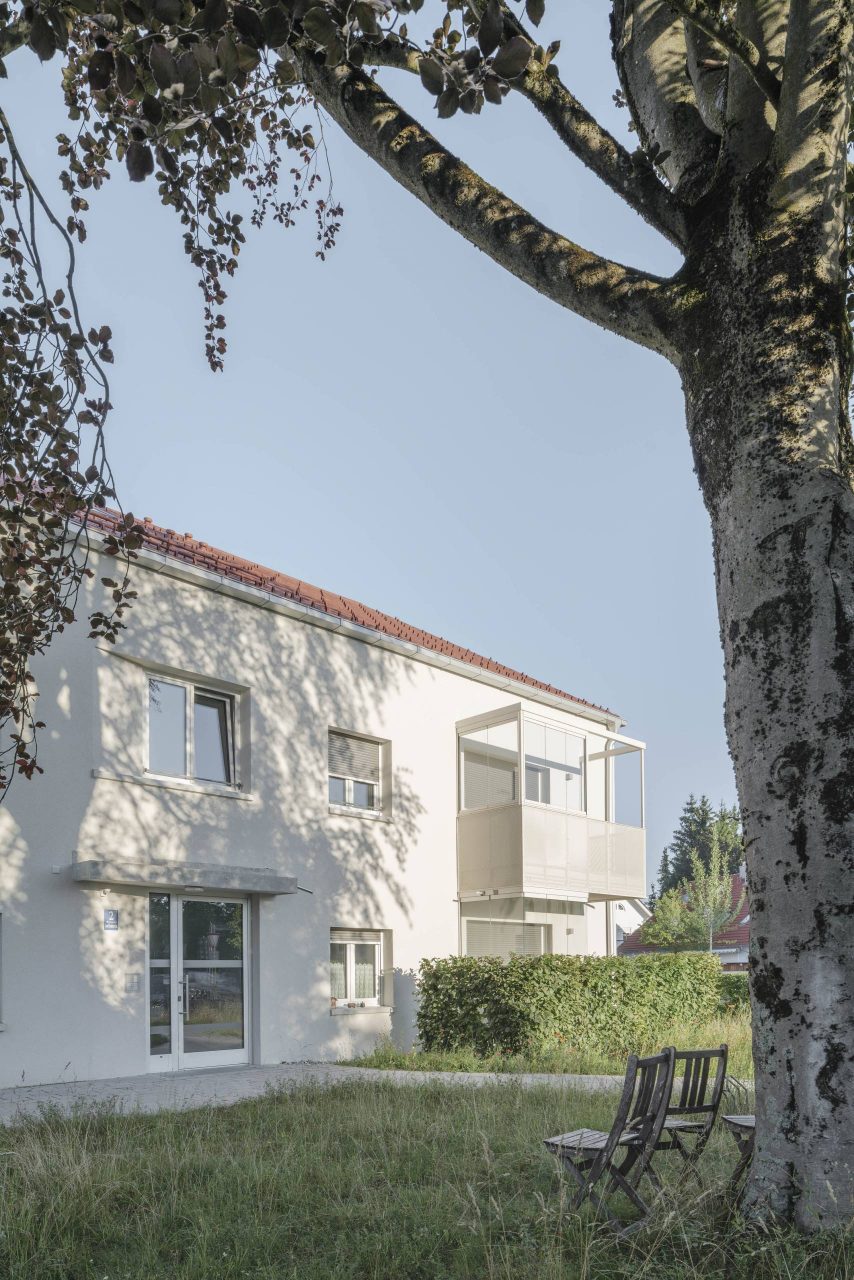
Städtebaulicher und hochbaulicher Wettbewerb 2013
„Der Beitrag weist eine hohe Eigenständigkeit im Hinblick auf die städtebauliche Struktur und die Freiraumgestaltung auf. Locker angeordnete Einzelbaukörper gruppieren sich um 3 Gemeinschaftsflächen und bilden dabei überschaubare und dennoch miteinander vernetzte Einheiten. Die Freiflächen sind parkartig angelegt und lassen eine angenehme Offenheit und Transparenz erwarten … Die versetze Anordnung der privat nutzbaren Gartenbereichen bietet großzügige und relativ ungestörte Aufenthaltsqualität. Das Gesamtgebiet fügt sich trotz der ungewöhnlichen und in hohem Maße identitätsbildende Baustruktur sehr gut in die Umgebung ein und bereichert diese durch hohe Transparenz und Durchgrünung.
Die gut strukturierte Grundrisstypologie ist über die Geschosse durchgängig ausgebildet und lässt so eine wirtschaftliche Realisierbarkeit erwarten. Die teilweise schräg angeordneten Außenwände bilden individuelle Wohnungstypen und geben in Form der schräg ansteigenden Trauflinien den Baukörpern eine skulpturale Eleganz. … Positiv fällt auf, dass die Wohnzimmer konsequent 2- seitig orientiert an den Gebäudeecken liegen. …
Die Arbeit stellt einen überraschenden und positiven Beitrag zum genossenschaftlichen Wohnen dar, der seine besonderen Qualitäten in der Bildung von gemeinschaftsfördernden Einheiten und der außergewöhnlichen Baukörperkonfiguration in einer parkartigen Freifläche herausstellt.“ (Auszug Jurybeurteilung Wettbewerb vom 27.09.2013)
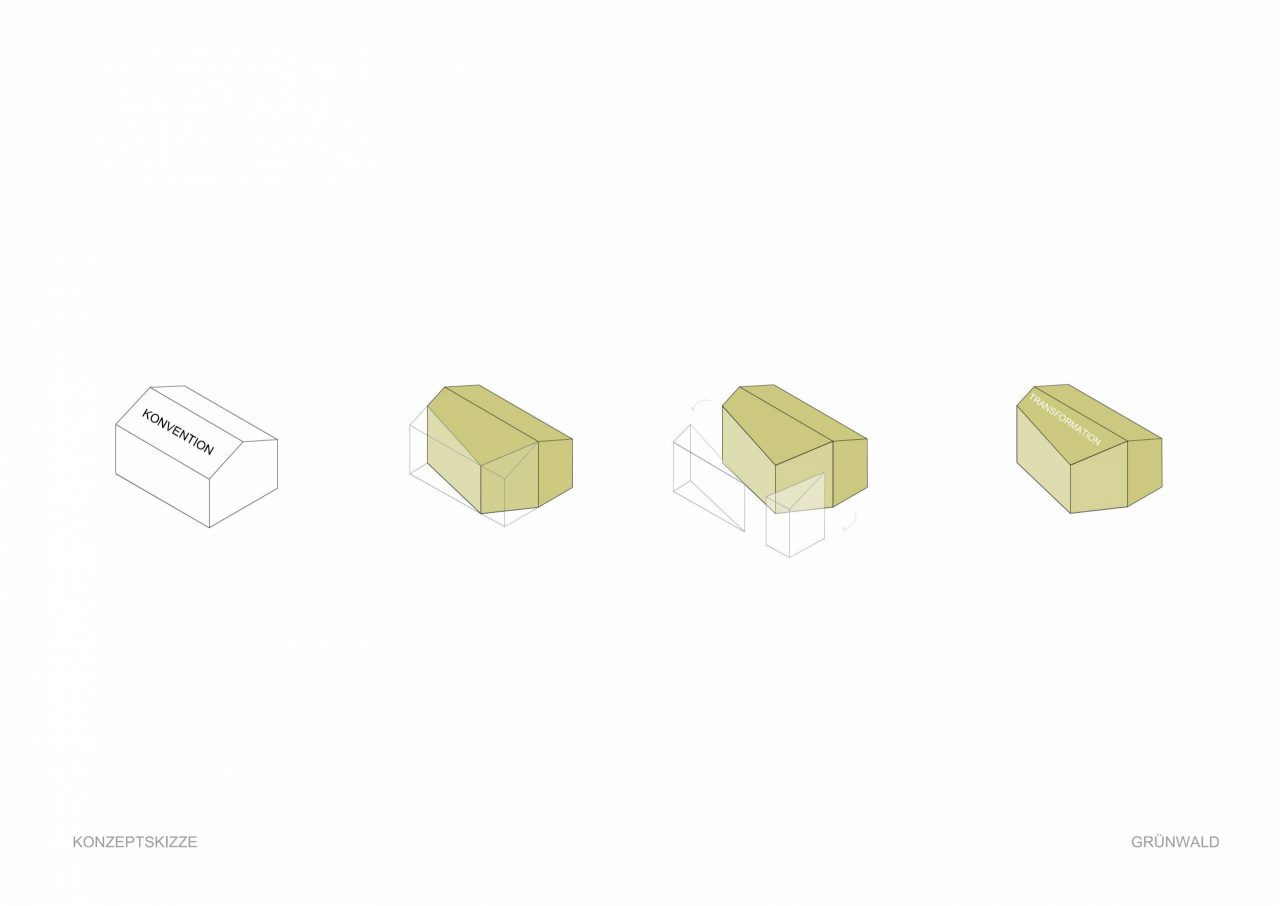
Grün Wald Haus : Umformung Einzelhaus
Die Stärkung von genossenschaftlichem Wohnen ist ein zeitgemäßes Thema und so haben wir städtebaulich ein gemeinschafts- und identitätstiftendes Motiv gefunden. Die Gebäude liegen in dem autofreien Grundstück in einer landschaftlich geprägten Art und Weise, das gesamte Terrain wird so zum Gemeingut.
Ausgehend vom klassischen Bautypus des freistehenden Hauses mit Satteldach werden die Gebäude mit einfachen Mitteln zu einem kristallinen Gebäude – einer Villa – umgeformt. Diese kompakten Gebäude sind aus heutiger Sicht ökologisch sinnvoll umsetzbar und kommen dem genossenschaftlichen Gedanken und den Bauabschnitten in der Umsetzung entgegen.
Gestaltkonzept
Die Baukörperform in ihrer skulpturalen Eleganz präsentiert sich mit einer rauen Putzfassade und einem beigefarbenen Naturton. Durch die verschiedene Drehung der Häuser ist die Schattenwirkung auf dem Putz auf jedem Haus anders. Die Unterschiede der Gebäude erscheinen auch durch die Ausrichtung der schrägen Laibungen zur Sonne. Die Häuser werden so als Gemeinschaft bzw. Genossenschaft eindeutig erkannt, sind aber dennoch leicht unterschiedlich.
Es entsteht so ein subtiles Spiel mit einer bekannten Baukörperform in leicht abgewandelter Form, ebenso sind die Fensteröffnungen ein bekanntes Motiv mit einer leicht abgewandelten Proportion. Dieses Spiel mit Zitaten setzt sich in dem ziegelgedeckten Satteldach und in einer dezent angewandten Ornamentik von Putzbändern fort, welche die Fassadenflächen in verschiedenster Weise untergliedern.
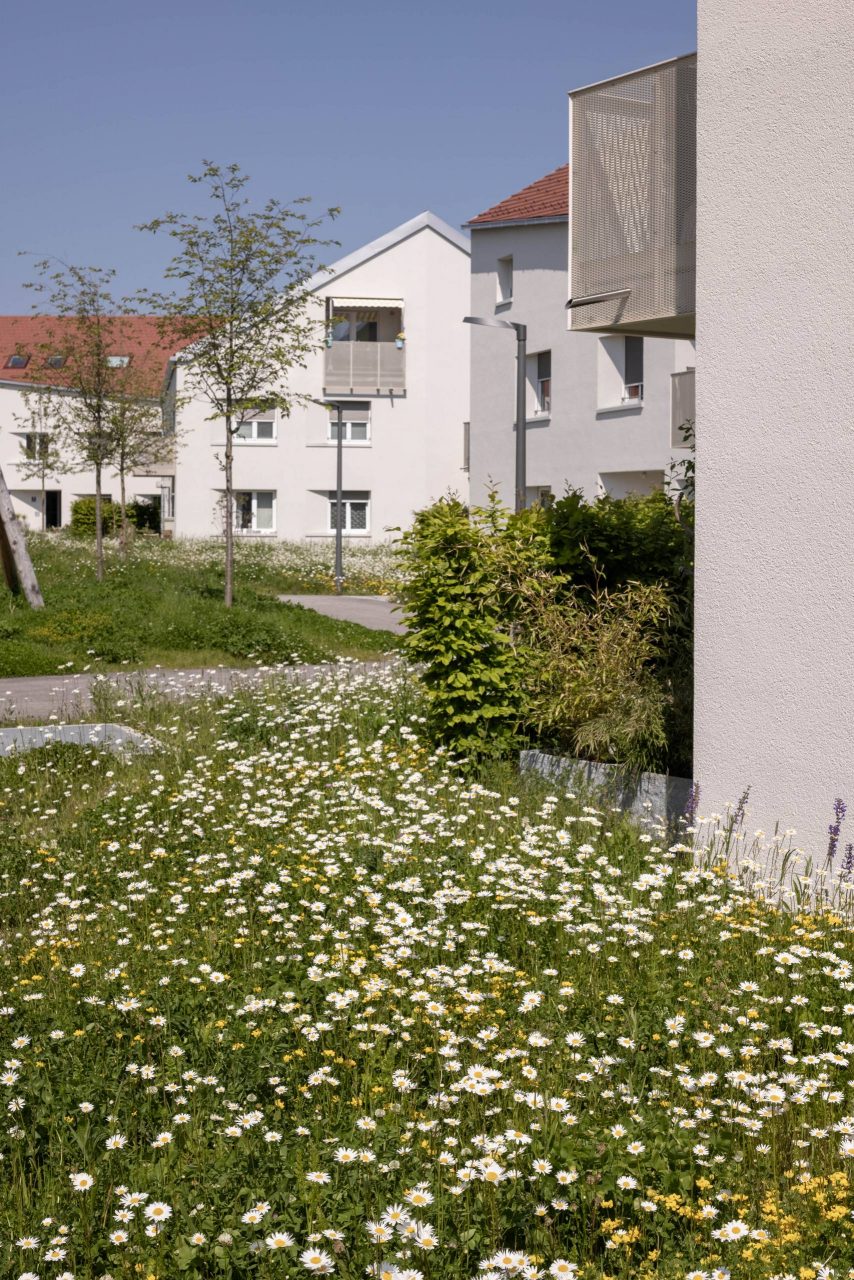
Projektdaten
Ort
Wohnbebauung nördlich der Oberhachinger Straße, München Grünwald
Mit fischer heumann Landschaftsarchitekten, München
Bauherr
Gemeinnützige Baugenossenschaft e.G.
Wettbewerb
1. Preis, Hochbaulicher Realisierungswettbewerb 2013
Fläche
1,8 HA, BGF 10.100m², Wohnfläche 9.371 m², 149 Wohneinheiten, 1 Gewerbeeinheit
Bauzeit
Bebauungsplan 2014-2015
Bauabschnitt I 2016-2020
Bauabschnitt II Baubeginn voraussichtlich 2020-2022
Leistung
HOAI LP 1-9
Wettbewerbsteam
Johanna Lölhöffel, Oliver Wagner
Projektteam Bauabschnitt I
Frank Feuchtenbeiner (Projektleitung), Johanna Lölhöffel, Anastasia Schubina
Projektteam Bauabschnitt II
Maria Kremsreiter, Johanna Lölhöffel (Projektleitung), Sophia Quanz
